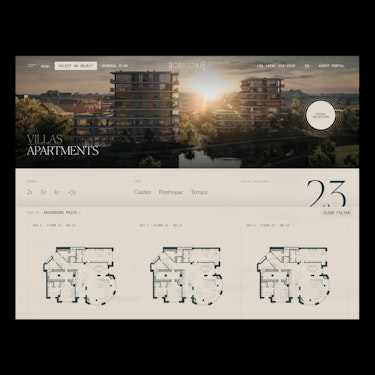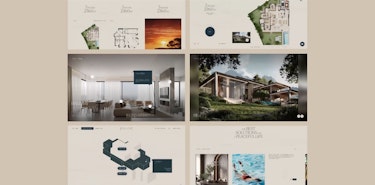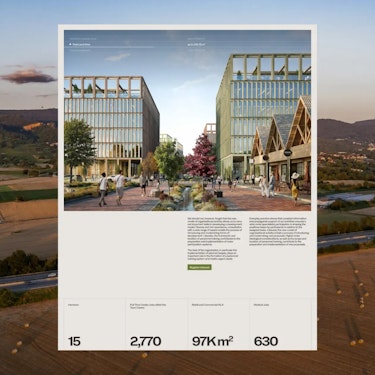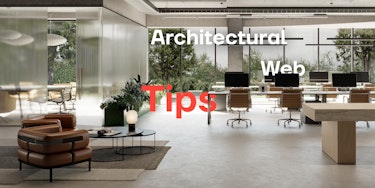For architects, the website is often the first point of interaction with prospective clients. It’s a digital handshake, embodying the firm’s design philosophy and professionalism. However, many architecture firms face challenges in achieving the right balance between aesthetics and marketing. A website that leans too heavily on artistic expression risks alienating users with poor functionality. Conversely, an overly commercialized site may appear generic, failing to capture the firm’s unique essence.
The importance of a balanced design lies in:
First Impressions: Users form opinions about a website in 50 milliseconds. An aesthetically pleasing and user-friendly design establishes credibility.
User Engagement: Strategic marketing features ensure visitors stay longer, explore projects, and take action.
Competitive Edge: A well-crafted website distinguishes the firm from competitors, emphasizing its value proposition.
Let’s delve into examples that illustrate how architecture firms can achieve this harmony.
Embrace Immersive Experiences with Virtual Reality (VR) and 3D Models
The future of architecture websites is interactive and immersive. Virtual reality (VR) and 3D models are not just for your client presentations — they can be integrated into your website to create engaging experiences for visitors. Allow users to explore your projects from the comfort of their own home by incorporating:
360-degree views of completed projects, offering a virtual walk-through experience.
Interactive 3D models, where users can zoom in, rotate, and explore the details of your architectural designs.
This cutting-edge technology adds a unique dimension to your portfolio, showcasing your work in a way that static images cannot.
Recommendation: As VR technology becomes more accessible, incorporate virtual tours of your key projects. This not only improves user engagement but also positions your firm as an innovator in the digital space.

Personalized User Experience with AI and Chatbots
Artificial intelligence (AI) is revolutionizing how businesses interact with customers, and architecture firms can leverage AI to create a more personalized and user-friendly experience.
AI Chatbots: Implement chatbots to provide instant assistance to visitors. Whether answering frequently asked questions, scheduling consultations, or providing initial project advice, chatbots can enhance user engagement.
Personalized Content: Use AI to tailor the content visitors see based on their preferences and browsing history. For example, a visitor interested in residential architecture might see more projects related to custom homes and residential design solutions.
Recommendation: By using AI to personalize the user experience, you can guide visitors through the information most relevant to them, increasing the chances of converting them into clients.

Video Content and Animation for Quick Engagement
Video content is becoming an essential part of web design, allowing visitors to engage quickly and deeply with your work. Create short, impactful videos that highlight:
Behind-the-scenes footage of your design process.
Time-lapse videos showcasing the construction phases of a project.
Drone footage of completed buildings, providing a bird’s-eye view of your architectural achievements.
Recommendation: Short, engaging videos are a powerful tool for grabbing attention. Make sure your videos load quickly and feature strong visuals that represent your firm’s capabilities.
Storytelling Through Project Pages
Storytelling continues to be a powerful tool in architectural marketing, and in 2025, it’s more important than ever to use narrative techniques to engage your audience. Each project should tell a story:
Journey of Design: Break down the process, from the initial concept sketches to the final build. Include sketches, mood boards, and photographs to illustrate the evolution of the design.
Client and Community Impact: Show how your design positively impacts the community or the environment. Use testimonials or quotes from clients, stakeholders, and collaborators to give a more human perspective.
Recommendation: Make each project page a storytelling experience that captivates users and shows the depth of thought and care your firm puts into every design.

Incorporating User-Generated Content (UGC) to Build Trust
In 2025, user-generated content (UGC) is becoming a powerful way to build credibility and trust with potential clients. Encourage past clients, collaborators, and even visitors to share their experiences and thoughts about your work.
Testimonials: Integrate positive client testimonials on your website, whether in text, video, or even social media posts.
Project Reviews: Allow visitors to comment or leave feedback on your project pages, creating a community-driven conversation about your work.
Recommendation: Make UGC a key feature of your site, creating a sense of social proof that can encourage new clients to take the next step with your firm.
As architecture firms continue to evolve in a digital world, the key to success lies in creating websites that blend beautiful design with effective marketing strategies. By incorporating emerging trends like VR, AI, and sustainability, your website can not only reflect your architectural philosophy but also attract and engage clients in a more personalized and meaningful way. Keep these tips in mind as you prepare your firm’s online presence for a successful 2025 — and beyond. With creativity and the right digital tools, your website can become a powerful tool for both brand development and client conversion.
